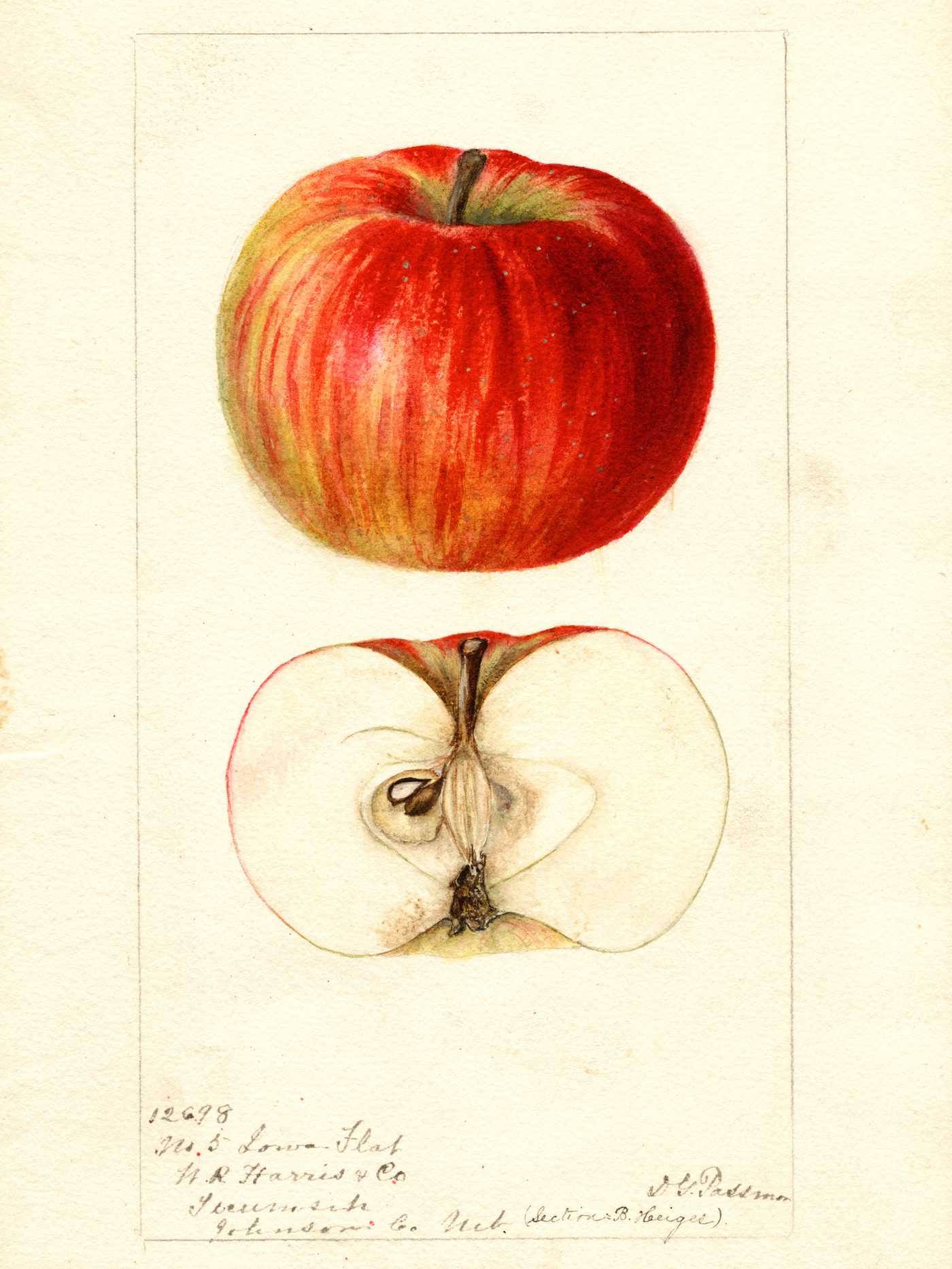
Enlarge this image
A painting from the USDA pomological watercolor collection depicts a long-lost apple, the Ivanhoe. U.S. Department of Agriculture hide caption
toggle caption U.S. Department of Agriculture
A painting from the USDA pomological watercolor collection depicts a long-lost apple, the Ivanhoe.
U.S. Department of AgricultureDavid Benscoter was a criminal investigator at the FBI and IRS for 24 years before transitioning to his new role: apple detective.
He's the founder of the Lost Apple Project, a nonprofit organization that searches abandoned farms and orchards in the Pacific Northwest to locate old varieties. Benscoter recently found seven types of apples in old orchards in Oregon, Washington and Idaho that were thought to have gone extinct as long as a century ago.
They're a mix of red, green and yellow, with names like the Almota, the Ivanhoe, the Eper and the Iowa Flat. Since 2014, Benscoter's organization has discovered 29 lost apple varieties, including the Streaked Pippin, the Sary Sinap and the Nero.

Enlarge this image
Dave Benscoter rediscovered the Iowa Flat and other apples by finding watercolor paintings like this commissioned by the USDA. U.S. Department of Agriculture hide caption
toggle caption U.S. Department of Agriculture
Dave Benscoter rediscovered the Iowa Flat and other apples by finding watercolor paintings like this commissioned by the USDA.
U.S. Department of Agriculture"An apple tree you've never tasted before, a taste somebody hasn't tasted in a hundred years, it's rewarding knowing that we brought these varieties back," Benscoter said.
Benscoter became interested in apples after a neighbor with a disability asked him to help care for her apple trees.
There were once at least 17,000 named varieties of apples in North America, but only about 4,500 are known to exist today. By the 20th century, farmers stopped growing most apple types because they were less in demand.
Benscoter scours seed catalogues, county fair records, newspaper clippings and nursery sales ledgers to search for lost apples. He found one, for instance, in a watercolor painting of fruits and nuts that the USDA contracted in 1880.

National Doughnut Or Donut? Discuss

Food This Contender For The World's Longest Cheesesteak Spans 3 City Blocks
He says the 100-year wait was worth it. The rediscovered apples, he says, have a unique taste compared to regular varieties, but are still just as tasty. According to the Whitman County Historical Society, which partnered with the nonprofit on the project, rediscovered apple types will soon become available again to the public.

Enlarge this image








